Become A Sponsor
|
Why Ads

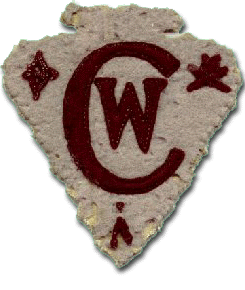
Florida
The
arrowhead is the original Florida patch and the round is the second society patch and also
the first lodge 326 patch. The arrowhead is a virtual twin to
the Michigan patch except for the Camp letters.
|
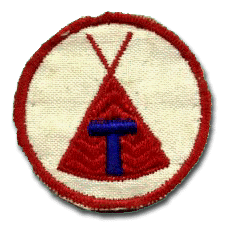
Florida
(See note below) |
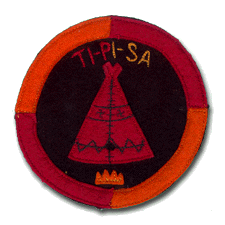
Indiana |
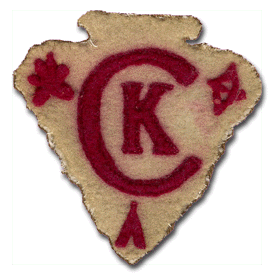
Michigan |
TIPISA, The Order of the Red Lodge - Summary: Tipisa is a Sioux Indian word that means "Red Tipi". This society was created in 1930 at Camp Kanesatake (Wolverine Council) in southeast Michigan. The scout executive transferred to the Meshingomesia Council in Indiana in 1932 and started a second Tipisa there. His replacement at Wolverine in 1932 transferred to Central Florida Council in 1938 and started a third Tipisa there. The Michigan Tipisa became OA lodge 332, the Indiana Tipisa became OA lodge 269 and the Florida Tipisa became OA Lodge 326. The Florida OA Lodge still bears the name of Tipisa. Each of the three Tipisa Society locations issued a membership patch to their members and the Florida Society actually had two different patches. The second one was also used as the first lodge patch when they converted to the Order of the Arrow in January 1946. The members of all three societies wore the membership patch in the same way. It was worn on the merit badge sash and almost always in the bottom point of the sash over the hip.
TIPISA, The Order of the Red Lodge - Details:
The Tipisa Honor Camper Society was born in 1930 at Camp Kanesatake in
southeast Michigan. Camp Kanesatake was built in 1926 and was the Wolverine
Council camp until it was sold in 1981. Tipisa is believed to have been created
by George Crossland (Wolverine's first executive) and Byron Vedder, the camp
Indian Lore staff member in the 1920's & 30's. The land on which Kanesatake
sat was steeped in Indian history. It was a meeting place for Chief Tecumseh
during the War of 1812, had Indian burial grounds on it and had the ruins of
an old Indian smoke tower buried in the center of the camp. Kanesatake means
"Camp on a hill". The camp was located near the intersection of two of the
oldest Indian roads in the midwest.
It was originally announced in a 1930 Michigan newspaper article that the "Order of the Arrow" was being organized at Camp Kanesatake. When camp opened it was not the OA but Tipisa that was organized. Some council exec's were not thrilled with having to pay dues to have the OA program. Considering the Great Depression was in full force it would seem that George Crossland decided to come up with his own program similar to the OA without the dues requirement. I have been told more than once that Ku-Ni-Eh was organized in Cincinatti in 1923 for the same reason, the OA dues requirement. Whether or not it is true I don't know. I do know the OA was supposed to organize in 1930 at Camp Kanesatake and Tipisa was created instead and proved to be a popular program in the three states where it existed for many years.
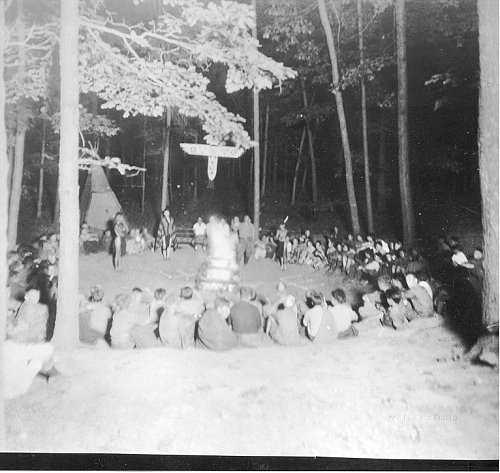
(The photo above was taken at Camp Kanesatake in about 1930. Boys around fire with feathers are members of Tipisa. Note thunderbirds drawn onto the ground.)
In Michigan two boys were chosen per week of camp and underwent an ordeal of twenty four hours of silence, hard work and had to find food in the wild. The boys were awakened at midnight and told to remain silent. They met at the Indian mound where a secret ceremony was performed then they were taken to an isolated area on Washington Lake where they spent the night alone then continued their ordeal throughout the following day. If they were successful they were inducted into Tipisa during the council fire. A council fire heavily stressed Indian lore and ceremony, a campfire was song and skits. The council fire was the highlight of the camp session. Each successful candidate was given a real eagle feather to wear at council fires as well as a felt arrowhead shaped camp award patch to put a small red tipi felt segment on (which was only for members of TIPISA). During their initiation ceremony at the council fire they wrote their given names on a piece of bark and then threw it in the blazing fire then were given new Indian names as members of TIPISA. Every living member of Tipisa that I have found remembers their Indian name to this day, quite a
testimonial to how impressed they were with the Tipisa induction.
When George Crossland left the Wolverine Council in 1932 he transferred to the Meshingomesia Council in central Indiana and started a second TIPISA there at their camp at Goose Lake. His replacement at Wolverine, Harold Pace, stayed until 1938 when he transferred to the Central Florida Council in Orlando, Florida. Mr. Pace started the third TIPISA there at Camp Wewa in 1938. Their OA lodge retained the name "TIPISA" when it was converted from a society to OA lodge #326 in 1946 and has the name to this day. The Indiana society was converted to the Me-she-kin-no-quah OA lodge #269 in 1944.
Me-she-kin-no-quah was the principal Indian Chief defeated at the Battle of Fallen Timbers by General "Mad" Anthony Wayne. Me-she-kin-no-quah means "little turtle". The original society in Michigan was converted to the Tecumseh OA Lodge #332 in 1946. Each society issued their members a society
patch. The original Florida society patch was a near twin to the Michigan society patch. The Florida group issued a second society patch that also served as their first OA Lodge patch. It was a 2" round twill patch. The Indiana society was the only one of the three to issue it's members a patch that actually had the word "Ti-pi-sa" embroidered on it. The Indiana patch was a 3 1/2" diameter felt on felt patch. All three of the societies had the red tipi on all of their patches. It was the one common denominator. All three societies had their members wear the membership patch on their merit badge sash down in the point of the sash over the hip. Florida's second patch might have been an exception to this. For complete information on TIPISA, read the Winter 1997 issue of the Scouting Collectors Quarterly which is the official publication of the National Scouting Collectors Society. Tipisa is a Sioux Indian word that means "Red Tipi". A 1930 Michigan newspaper account of it's creation referred to it as "TIPISA, The Order of the Red Lodge".
Additional Information from Rick Obermeyer (3/21/2012): Tipisa Honor
Society patch in Florida The felt A itself was not the Tipisa patch. It was
the summer camp patch to which emblems could be added. Those added emblems could
be a campfire or a Red tipi and the like. There are felt A's with no added
emblems, or with two added emblems, neither of which are Red tipi's. It's the
small Red tipi emblem that is an Honor Society "patch", not the whole felt A.
Material found on this page is the work of David L. Eby and used USSSP, Inc. by permission. This material may not be reproduced without the express permission of David L. Eby
|





